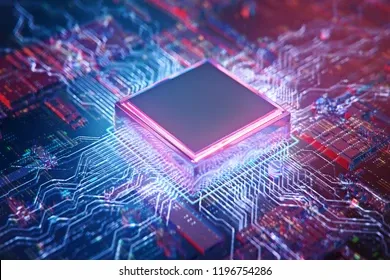Hello friends.
I hope you all are well and have a great time.
So let's start this post.
Today I have brought you a very informative post .
Processors:
The processor is an incorporated digital circuit that plays computer-assisted calculations. The processor plays calculations, logical, input / output (I / O) and different fundamental instructions transmitted from the working system (OS).

Source
Many different strategies rely upon the overall performance of the processor.
The phrases processor, centralized processing unit (CPU) and microprocessor are regularly called synonyms. Most humans use the word “processor” in trade for the word “CPU” today, that is technically wrong because the CPU is simply one of the processors inside a private computer (PC).
Types of processors:
Different types of processors are microprocessor, microcontroller, embedded processor, digital signal processor and processors that can vary depending on the devices. Key CPU features are labeled as the heart features of the processor and system. The control unit opens, downloads, and executes the installation instructions. The processor can be embedded in a microprocessor and integrated into an IC chip unit. But some devices are based on multi-core processors. Build one or more CPUs. It is a small, normal part with pins attached to the mother board. It may also be connected to a motherboard with a fan and a heat sink to disperse the generated heat.
1. Microprocessor
The basic process of the system is defined by a microprocessor installed in embedded systems. There are different types of microprocessors on the market that are used by different businesses. Microprocessor is a standard processor that includes ALU, a control unit and a registry club known as control registers, status registers, and scratchpad registers.
It can be chip memory and a few interactions that may interact with the outside world through disruptive lines, while one can be ports and memory registers to connect with the external world. These holes are often referred to as adjustable and make them work as an outlet or input. These programs can be fed and modified depending on the behavior of the devices.
2. Microcontroller
A microcontroller is a standard that is available in different sizes and packages. Learning input and response to your corresponding output is a basic function of the basic microcontroller so it is called General-purpose input and output processors (GPIO). Fewer controls are Microchip P1C16F877A, Microchip Atmega328, Microchip P1C18F45K22, Microchip P1C16F671, and Microchip P1C16F1503.
3. Embedded Processor
The embedded processor is designed to control electrical and mechanical functions. Includes multiple blocks such as timer, system memory, data memory, reset, power supply, data memory, interference controller, clock oscillator systems, interlocking circuits, specific circuits and application holes and circuits.
4. Digital Signal Processor
The digital signal processor is used for filtering, measuring, compressing analogue and digital signals. Signal processing means deception and analysis of digital signals. This process can be done using specific application integration circuits, a digital signal processor, a set of custom gateways or a computer to achieve a unique signal. Processors on DSP are used for barcode scanners, oscilloscope, printers, cell phones. These processors are used to speed up and deliver real-time applications.
I hope that you will like my post.
God bless you
Byee 👋👋